A new technology to make your workshop more efficient. We may not have flying cars yet, but the vehicle buying and manufacturing process is becoming the stuff of science fiction. With a camera-based smartphone app that uses 3D animations, augmented reality and video to teach owners about their cars.
Road safety through Augmented Driving
The impressive technology of Augmented Driving with advanced real-time object detection covers really awesome features to support your driving.
- It reduces the dangers of driving by enhancing the driver’s view of what lies ahead of them, particularly in situations where there is dense fog, heavy rain or low lighting.
- It displays information like
- Lane detection and lane departure warning
- Vehicle detection and safety distance monitoring
Speeding etc.

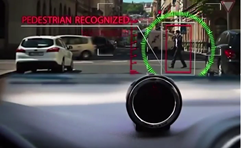
Augmented Reality for Instructions and Service Maintenance
Not familiar with the interior of the car?
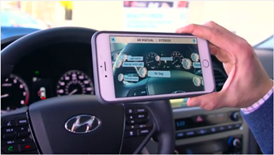
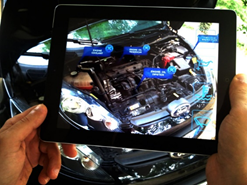
- AR apps allow owners to use their phones to get more familiar with their cars and learn how to perform basic maintenance.
- If the device is pointed at the knob or device or any lever that can be seen, the app displays the details and the instructions of “How to use” of the said item of interest.
- The app can also show an illustrated, step-by-step walkthrough of the related maintenance item.
- Can help technicians get a first-hand idea about the car’s conditions for cases where roadside assistance is required.
Augmented Reality Windshields -the next frontier in digital advertising
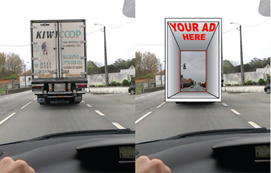
- Automakers and tech companies sense new revenue opportunities in putting ads, services in front of drivers.
- Using a vehicle’s windshield to overlay content may be the next way to pitch more products and services to consumers.
- These ads could feature nearby restaurants, gas stations, shops, attractions, and other businesses near your location.
- Promoters feel a windshield display is a safer alternative than drivers taking their eyes off the road to glance down and check a smartphone.
AR in Print Media – deliver messages beyond the printed page to the tech-savvy millennials
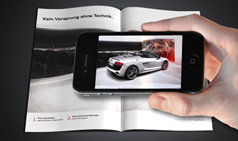
Car manufacturers can take their advertising campaign in print media to a new level with the development of a mobile application powered by Augmented Reality.
- The reader simply downloads an app to their mobile phone.
- With the app on, the user scans the car and in the newspaper using a mobile camera.
- The reader can view exclusive images and videos about the innovative features found in the car.
Using AR Technology on the Factory Floor
- Engineers no longer need years of training before assembling.
- By wearing augmented reality glasses that use cameras, depth sensors, and motion sensors to overlay images onto the real working environment, engineers can see renderings of cables, bolts, parts, part numbers, and instructions on how to assemble a particular component.
- This new method increases engineers’ accuracy to 96% while working 30% faster.
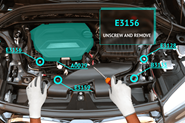
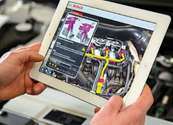
- Example 1: Wiring harnesses are often a vexing element for repair technicians. It’s easy to reverse them or grab the wrong harness. AR could help maintenance technicians avoid problems like these.
- Example 2: The AR annotation layer could highlight a sequence of operations, precise bolt torque values, special tools needed for the task, or display warnings about potentially hazardous activities and materials.
Reeling In Customers with Augmented Reality
How can automakers combat decreasing Showroom Visits?
- Showroom experience can be enhanced by equipping dealers with augmented reality app.
- App can synchronize with marker and trigger interactive content which provided a complete sense of what the vehicle offers.
- Automakers can showcase the features of the car that is impossible to demonstrate inside the showroom.
For example:
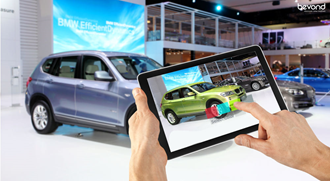
- Displaying cars in a variety of colors with the different option of add-ons in a showroom.
- An X-ray view of the selected car that shows its components, a 3D breakdown of the brake assembly, and a visualization of the vehicle in a wind tunnel etc.
Bringing the showroom to customers –virtually conjuring up a car with a smartphone

- With AR technology, customers can explore a full-scale 3D version of the latest car models – any time, any place. This is made possible through the rendering of a life-sized virtual image.
- Using the AR app, customers can walk around and inside to view the finer details of the car from any angle. The user can view every part of the vehicle, whether it is the interior or even the mechanical components underneath the car.
- They can also switch on the radio and headlights and open the doors and boot to explore the interiors of the car.
- The AR app also allows them to design by changing the exterior colors, interiors, and wheels.
Gesture Control User Interface with Augmented Reality
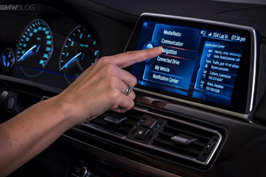
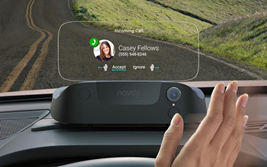
- AR technology can improve the way drivers interact with features inside the automobile or on their smartphone.
- E.g. Drivers can change the volume (circle motion), answer or dismiss a call (swipe left and right)
The technology also projects maps, messages, notifications, and music and car information in front of drivers, removing the need for them to look away from the road for information received while driving.
Virtual Reality – The real game changer for the automotive market
- VR enables dealers to showcase models conveniently wherever the customer wants – in a boutique shop, or shopping centers, in customers’ living rooms, or at work.
- And there are no constraints; entire model line-ups can be shown – past current and future – with an infinite number of optional configurations including user-controlled 360-view of the car’s interior and exterior.
- Auto marketers are using VR as a way to lure younger buyers to take test drives with online marketing.
- This goes beyond static words and images and staid promotional videos.
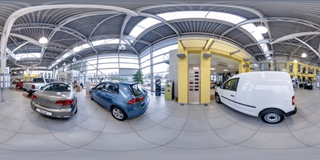
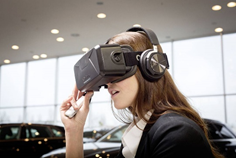
Manufacturing cars with Virtual Reality
Automakers are using it for design, engineering, and manufacturing purposes!
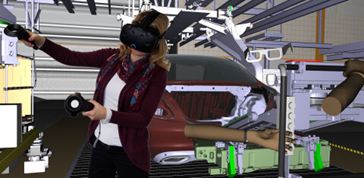
- The use of virtual technologies allows designers and engineers to see, assess, and modify a considerable number of variants.
- Designers and engineers can evaluate 3D models at scale, collaborate from anywhere, and reduce dependency on physical prototypes.
- They can evaluate mirrors, placement of controls, and design quality, such as gaps, fits, and finishes.
How Microsoft HoloLens could transform car buying
- Microsoft’s HoloLens promises incredible ways to preview products.
- Enhance the car buying experience at the dealership by providing the complete view of the interior of the vehicle.
- With the power of holograms, customers have the ability to open the car up completely, take a closer look at the engine, inspect the chassis, or watch the drivetrain and transmission in action.
- Using mixed reality, customers can choose the type of car – to explore the colors, rims, or get a better understanding of the features, services, and options available.

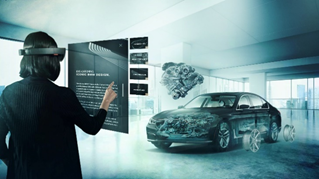
Digitally designing future cars
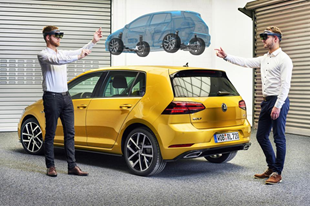
- With simulation playing a large role in designing cars, engineers can make use of HoloLens augmented reality to interact with virtual parts.
- Using the 3D mixed reality, engineers manipulate a scale model of a car, change wheels, paint colors, body shape and more, using simple gestures or voice commands.
- The technology allows changes to be made more efficiently and several teams in different countries to work together seamlessly. The teams can directly follow and compare minimal changes to the model and then make a decision.
HoloLens for Assembly assistance
Door Locking Assembly System:
- A door locking system involves the implementation of a little lever to be engaged in the lock with enough space needed for the lock and the lever to work with precise movement.
- Workers require a three dimensional understanding of the space to proceed without errors.
- With the help of Microsoft HoloLens, the worker will be able to see through the door (via holographic projection) and will be able to fix and assemble with ease.
Determining required Bolt Clamp Load for automotive fasteners such as Ultrasonic Tightening Bolt
- A challenge that involves calculating clamping force by tightening the bolt.
- With the help of Microsoft HoloLens, the workers will be able to view in real-time, measure, evaluate, and indicate the achieved clamp load with ease.

At immersive Gaze, we align ourself and stay ahead by leveraging expertise, innovation, and resources. And so, we became an illustrious Virtual and Augmented Reality Services provider in India. We will help to enhance your business growth by augmented technology. We developed advanced AR applications for construction, healthcare and education industries.

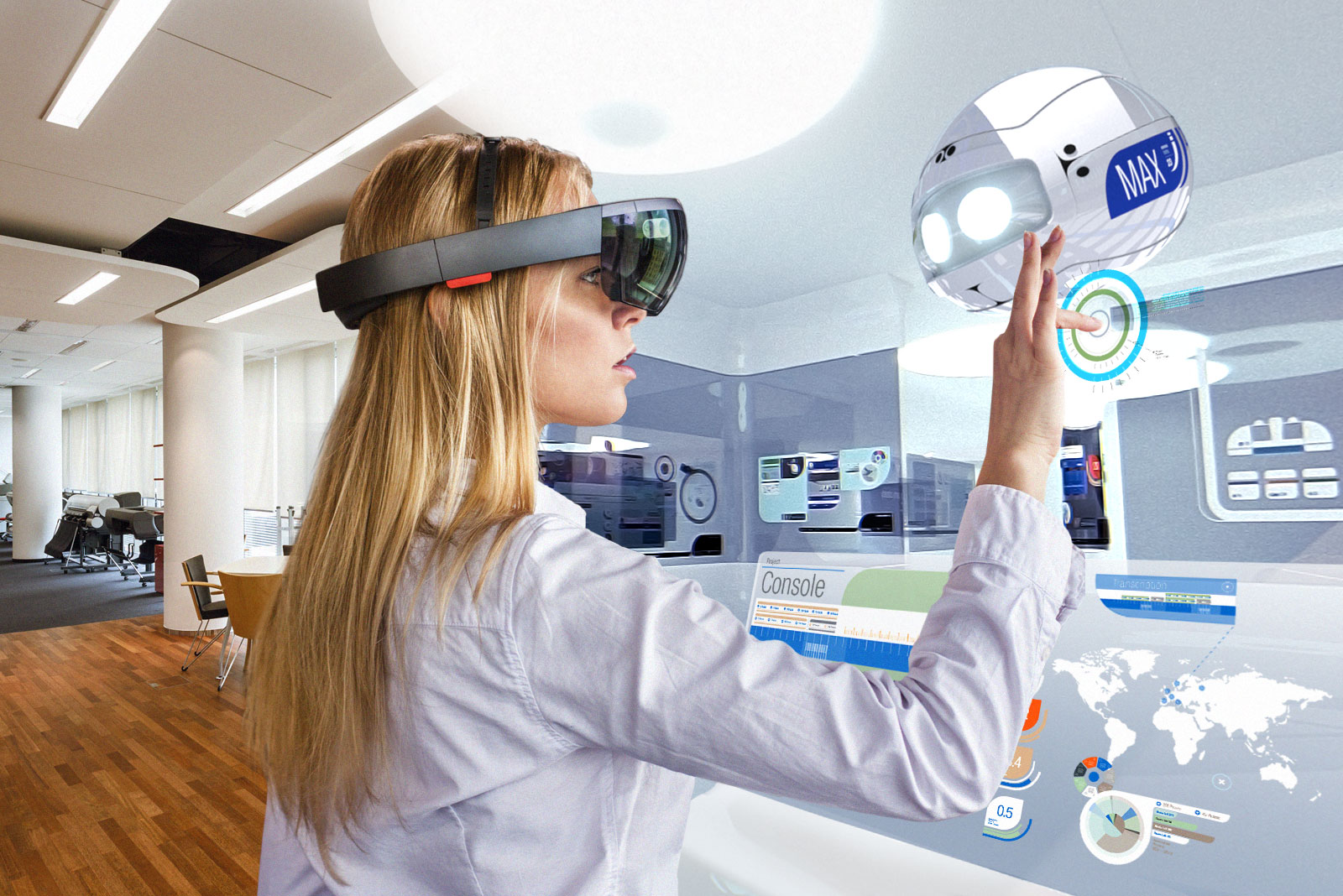
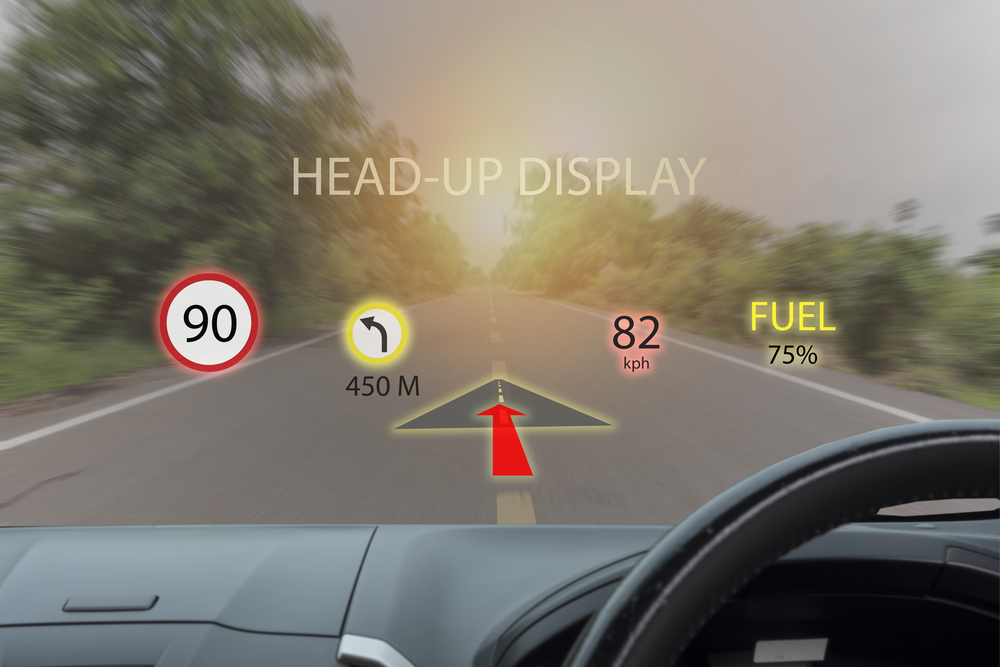
7 thoughts on “Impact of AR/VR/MR in Automotive industry”
Very nice article, just what I was looking for.
It is appropriate time to make some plans for the future and it is time to be happy. I have read this post and if I could I wish to suggest you some interesting things or tips. Perhaps you can write next articles referring to this article. I desire to read even more things about it!
Thanks for your feedback.
If some one wants to be updated with most up-to-date technologies
afterward he must be go to see this web page and be up to date all the time.
Thank you for your valuable feedback.
I don’t even know how I ended up here, but I thought this post was
great. I do not know who you are but certainly you’re going to a famous blogger if you are not
already 😉 Cheers!
Thank you